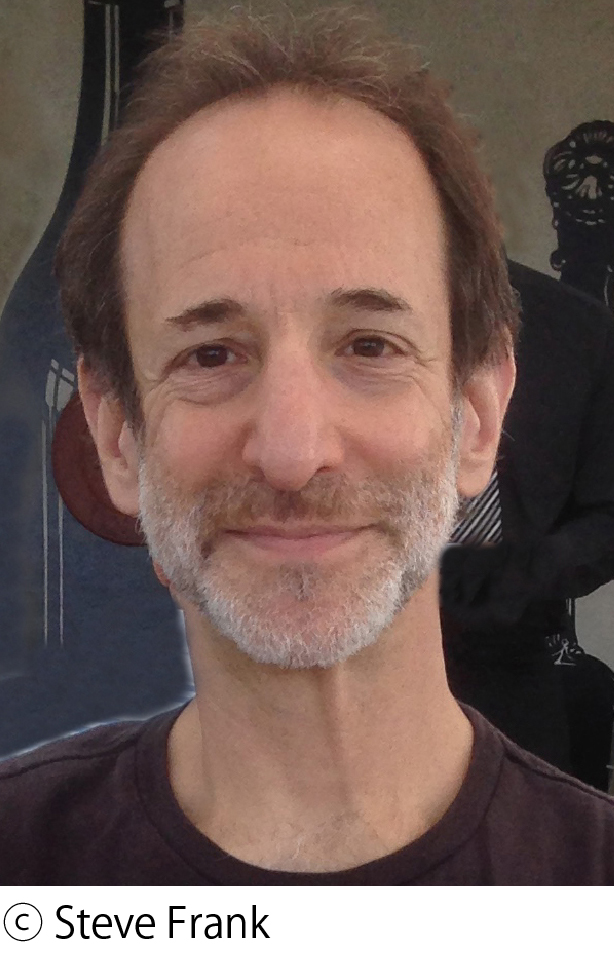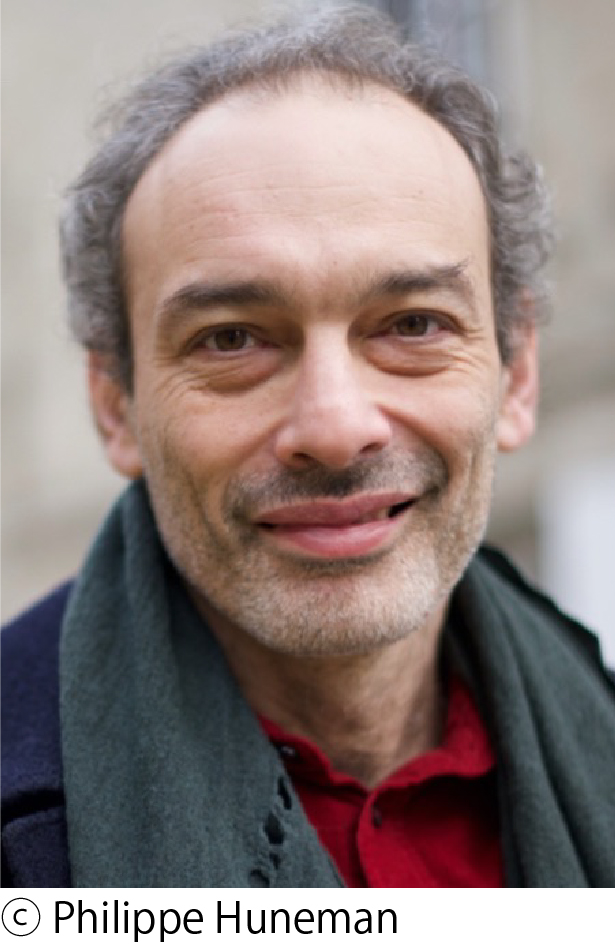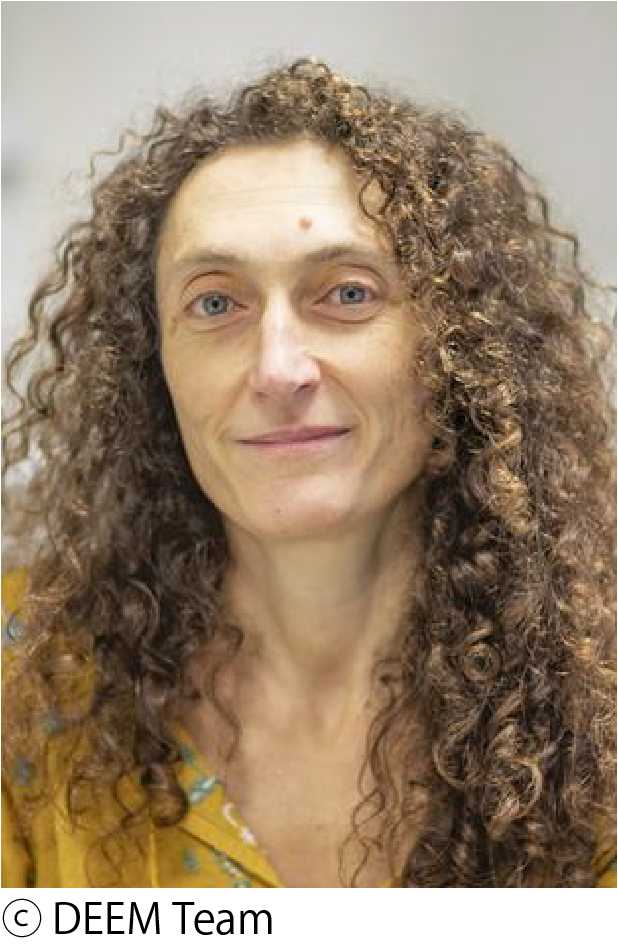INVITED SPEAKERS

Steven A. Frank, Evolution Theory, UC Irvine
https://stevefrank.org
Steve develops mathematical, computational, and conceptual models to study natural selection and the evolution of organismal design. His work makes testable predictions on topics ranging from microbial life history to sociality to cancer. His study of these particular topics leads to syntheses of natural selection, robustness in relation to biological design, and the commonly observed patterns that emerge from information flow and scale. Current projects: (1) Microbial life history: the fundamental forces of biological design, (2) Evolution of regulatory control, and (3) Invariance and the common patterns of nature.

Philippe Huneman, Philosophy of Biology, CNRS/Université Paris 1 Sorbonne
https://philippehuneman.wordpress.com/
Philippe focuses on the philosophy of evolutionary biology and ecology. His main interests are: the variety of evolutionary explanations; the relations between variation, selection, and drift; the issue of individuality in biology related to the “evolutionary transitions” program and the formal definitions of emergence; the philosophy of ecology and especially neutral theories in community ecology. Last books published: Why? The philosophy behind the question (Stanford University Press) and Death. Perspectives from the Philosophy of Biology (Palgrave-McMillam).

Dan Jarosz, Evolutionary Biology, Stanford University
https://jarosz.stanford.edu
Some biological systems can remain unaltered for long periods, whereas others that are genetically identical undergo rapid diversification. This paradox lies at the heart of how neurons can be killed by improper expression of a single aggregation-prone protein, how cancer cells can tolerate accumulating mutation burden, and how disease-associated mutations have devastating consequences in some individuals, but no effect in others. The Jarosz Lab seeks to understand mechanisms driving this behavior, and to do so we employ multidisciplinary approaches ranging from chemical biology to systems-level quantitative genetics and use models as diverse as baker’s yeast and the African turquoise killifish.

Purificación López-García, Origin & Evolution of Life, CNRS & Université Paris-Saclay
https://www.deemteam.fr/en/
Puri is a biologist and research director at CNRS where she leads the Diversity, Ecology and Evolution of Microbes (DEEM) Team. She is interested in very broad questions about the origin and early evolution of life on Earth, with a special focus on microbial lineages, which cover the vast majority of biological diversity. Current topics of her research are: i) microbial diversity and its origin, ii) Phylogenomics and early evolution, iii) Microbial ecology.

Rosalyn Moran, Computational Neuroscience, King’s College London
https://www.kcl.ac.uk/people/rosalyn-moran
The research in the Moran lab focuses on computational neuroscience, computational psychiatry and computational neurology. In particular, they aim to join together brain connectivity analysis with their algorithmic role; i.e. what information brain connections relay. This work lies at the intersection of artificial intelligence, Bayesian inference and experimental neurobiology. Of particular interest are the role of families of neurotransmitters in prediction errors and model-based decision making. The lab uses the free energy principle as a principle to develop new methods in artificial intelligence and in disease modelling, focusing on age-related neurodegenerative disease and schizophrenia.

Paul Rainey, Microbial Population Biology, Max Planck Institute for Evolutionary Biology, ESPCI Paris
https://www.evolbio.mpg.de/mpb
Paul’s work is centred around microbial populations, which he uses as experimental tools to tackle questions– and inspire new theory – ranging from the dynamics and genetics of adaptive evolution, through the causes of major evolutionary transitions in individuality. Of growing fascination is how selection works on complex communities, and extension of ideas from ecological scaffolding that provoke thinking on future major evolutionary transitions between humans and AI.

Eörs Szathmáry, Major Evolutionary Transitions, Eötvös University
https://ecolres.hu/en/munkatarsak/eors-szathmary
There is no firm theoretical reason to expect evolutionary lineages to increase in complexity with time, and no empirical evidence that they do so. Nevertheless, eukaryotic cells are more complex than prokaryotic ones, animals and plants are more complex than protists, and so on. This increase in complexity may have been achieved as a result of a series of major evolutionary transitions. These involved changes in the way information is stored and transmitted. The Szathmáry Lab focuses on the following issues: transition from chemistry to biology, eukaryotic origins, general replicator theory, evolutionary origin and dynamics of information-handling subsystems, evolution and learning, eco-evolutionary emergence of language, language as a biological system.

Itai Yanai, Computational Systems Biology of Cell States, New York University Langone Health,
https://yanailab.org
Itai’s research revolves around the study of cancer as a disease that stems from the liability of multicellularity, and which spans a large swath of biology, including gene regulation, evolution by natural selection, and chromatin-mediated cellular plasticity. The Yanai lab is one of the pioneers of single-cell transcriptomics and by integrating this methodology with an evolutionary and developmental biology perspective, the lab is establishing systematic approaches for delineating and understanding the gene programs that underlie oncogenic systems.
SENIOR GUESTS

Yves Barral, Cellular Biology, ETH Zurich
https://bc.biol.ethz.ch/research/barral.html
Yves is broadly interested in asymmetric cell division and how it generates cellular diversity. One of his main research themes focuses on how single cells make and propagate adaptive decisions. As a paradigm for this, his lab studies the computing and decision-making machinery through which yeast cells decide to mate, choose a conjugation partner, or learn to avoid suboptimal ones based on the stimuli they receive, and how they memorize the information.

Mikhail Gromov, Mathematical Biology, IHES & NYU
https://www.ihes.fr/~gromov/
Misha, a world renowned geometer and Abel Prize winner (2009), has totally reshaped his discipline with his work: of fundamental importance are his “soft” approach to geometry and his contribution, in particular, to Riemannian geometry, geometric group theory, and symplectic geometry. His extra-mathematical interests extend to biology, the thinking process, artificial intelligence, language and far beyond. He has written extensively on the frontiers of pure mathematics and science.

Larry Guth, Analysis & PDE, Geometry, MIT
https://math.mit.edu/directory/profile.html?pid=1461
Larry's research interests are in metric geometry, harmonic analysis, and extremal combinatorics. Metric geometry is the study of inequalities involving lengths, areas, and volumes for instance isoperimetric inequalities and systolic inequalities, the latter a focus of Larry's work. Another focus is to find connections between geometric inequalities and topology. More recently, Larry has worked in harmonic analysis and combinatorics. A lot of this work is related to the Kakeya problem, an open question in Euclidean geometry that connects with restriction-type estimates in Fourier analysis and with estimates about incidences of lines in extremal combinatorics.

Yi Huang, Geometric Topology, Tsinghua University
https://www.yihuang.site
Yi’s research primarily centers around theory of hyperbolic surfaces. He is amused by and curious as to why hyperbolic geometry seems to crop up in different pockets of natural science, ranging from the latent geometry of complex networks, to coalescent theory and the space of phylogenetic trees, and even to the metric space of Gaussian distributions. More generally, he is interested in applications of geometric and topological ideas in “real life” questions.

Eugene V. Koonin, Evolutionary Genetics, National Center for Biotechnology Information, National Library of Medicine, National Institute of Health (USA)
https://www.ncbi.nlm.nih.gov/research/groups/koonin/
Eugene is an NIH Distinguished Investigator, the leader of the Evolutionary Genomics Group at the National Center for Biotechnology Information (NCBI) at the NIH, and a member of the National Academy of Sciences of the USA. His research focuses on genome evolution, especially in microbes and viruses, host-parasite coevolution, and more specifically, functions and evolution of antivirus defense systems including CRISPR-Cas. He also works on the general theory of evolution based on physical principles.

Yann LeCun, Computational and Biological Learning, Courant Institute, New York University & Meta AI
http://yann.lecun.com/
Yann’s current interests include AI, machine learning, computer perception, robotics, and computational neuroscience. He is best known for his contributions to deep learning and neural networks, particularly the convolutional network model which is very widely used in computer vision and speech recognition applications. He has published over 190 papers on these topics as well as on handwriting recognition, image compression, and dedicated hardware for AI.

Thomas Michaels, Theoretical Biological Physics, ETH Zurich
https://bc.biol.ethz.ch/research/michaels-group.html
Thomas and his group use ideas from theoretical physics, control theory and computational biology, in close collaboration with experimentalists, to develop a quantitative understanding of complex systems in biology. Most of our current research seeks to understand how functional and pathological biomolecular aggregation processes are regulated in time and in space in living systems. Current projects include understanding how liquid organelles act as control units that regulate biochemistry inside living cells and modelling the pathological aggregation of proteins into amyloid fibrils.

Nicolas Minc, Cellular Morphogenesis, Institut Jacques Monod, U. Paris Cité/CNRS
http://www.minclab.fr/
Nicolas and his group aim to understand how cells solve geometrical problems, to perform their functions, and define their morphogenesis. They study questions of cell division, growth, polarization, and multicellular morphogenesis, and combine mathematical models and quantitative biology approaches to address how shape sensing may emerge from the physical biology of the cytoskeleton, the cell surface, and the cytoplasm.

Pierre-Yves Oudeyer, AI and Cognitive Science, INRIA Bordeaux
https://flowers.inria.fr
Pierre-Yves and his team study lifelong open-ended learning, and the self-organization of behavioural, cognitive and language structures, at the frontiers of AI and cognitive sciences. Within the field of developmental AI, they use machines as tools to understand better how children learn, and study how machines could learn autonomously like them and integrate within human cultures. They study models of curiosity-driven autotelic learning, enabling humans and machines to set their own goals and self-organize their learning curriculum. They work on applications in education and assisted scientific discovery, using AI techniques in the service of humans, fostering learning, curiosity, exploration and creativity.

Bob Penner, Mathematics, IHES & UC Los Angeles
https://www.ihes.fr/en/professeur/robert-c-penner/
Bob's post-doctoral work in geometry and high-energy physics apply also to the combinatorics and topology/geometry of RNA and protein. Indeed, combinatorics is independent of scale, whether the Platonic scale of pure math, the Planck scale of strings, or the Angstrom scale of macromolecules. This study of biological macromolecules has been his inroad to more extensive work in theoretical biology generally. One principal current activity has been developing a new tool in structural biology for estimating backbone-free energy from geometry, for example, applied to viral glycoproteins.

Yukiko Yamashita, Cellular Biology, MIT
https://yamashitalab.wi.mit.edu/
Yukiko and her lab is interested in germline immortality – the mechanism that enabled the continuation of the lineage through 1.5 billion years of multicellular organisms' history, and how this mechanism may be involved in the process of speciation. Specifically, they investigate the mechanism of rDNA copy number maintenance, the function of satellite DNA and asymmetric cell division.
JUNIOR GUESTS

Michael Barnett, Microbial Population Biology, Max Planck Institute for Evolutionary Biology
Michael is a postdoc in Paul Rainey’s group. His research is focused on how organisms come to generate useful variation through mutation, and in particular how natural selection can act to increase the likelihood of useful variation being generated. He uses experimental evolution in a bacterial model organism as a tractable means to explore this.
 Anjali Bhat, Neuroscience, Wellcome Centre for Human Neuroimaging, University College London
Anjali Bhat, Neuroscience, Wellcome Centre for Human Neuroimaging, University College London
https://www.anjalibhat.org/
Anjali is a postdoctoral research fellow at the Wellcome Centre for Human Neuroimaging, working with Rosalyn Moran and Karl Friston. Her project is titled, “The self as agent-environment nexus: Crossing disciplinary boundaries to help human selves and anticipate artificial selves.” In particular, Anjali is interested in delusional beliefs and altered percepts, as seen in psychedelic states and psychosis. Central themes of her research include psychosis, active inference, interoception, self-other distinctions in the mind, immune system and in pregnancy; hallucinations, delusions and psychedelics.

Dániel Czégel, Intelligent Evolution, Center for Ecological Research (Hungary) & Arizona State University
https://ecolres.hu/en/munkatarsak/daniel-czegel/
Dániel works with Eörs Szathmáry wants to understand where intelligence without designer comes from, seeking answers to questions such as: In what precise mathematical sense is Darwinian evolution intelligent? Does Darwinian evolution contribute to our own intelligence – operating over neural representations as replicators in the brain? Where does design come into play to shape chemical complexity, where does it come from and how can we manipulate it? If biology is "cognition all the way down", how can we formalize it, building towards a computational cognitive science of biology across scales?

Aliaksandr Damenikan, Cellular Biology, ETH Zurich
Alex is a PhD student at ETH Zurich in the Barral group. In his project he focuses on understanding the molecular mechanisms of learning observed in sexual behavior of Saccharomyces cerevisiae. Alex uses molecular genetics and live-cell microscopy to explain the links between information stored in DNA (inheritance) and individually acquired historic information (memory).

Agathe Du Crest De Villeneuve, Philosophy of Biology, Université Paris 1 Panthéon Sorbonne
Agathe is a PhD student in the group of Philippe Huneman and her work focuses on the ontological and epistemological stakes of generalizations of Darwinism in social sciences, especially regarding the evolution of sexual and gender characteristics. She investigates the explanatory power of various Darwinian approaches as evolutionary psychology and cultural evolution, to make sense of the way gender differences emerge in articulation with sexual characteristics, change and sometimes pervades in a population, structuring individual behaviors and social representations.

Solange Haas, Philosophy of Ecology, Université Paris 1 Panthéon-Sorbonne
https://ihpst.pantheonsorbonne.fr/equipe/doctorants
After graduating in logic and epistemology, Solange is writing her thesis in the philosophy of ecology in the group of Philippe Huneman. She is focusing on anticipatory predictions made in scientific ecology to inform decision-making. The aim is to understand how predictions are formed from mathematical models and then expressed in order to foster public decisions for biodiversity conservation. Her interests particularly lie in the uncertainties of the predictions: their different natures and how they variously influence decisions.

Gautier Hamon, Machine Learning, INRIA Bordeaux
Gautier is a PhD student in the FLOWERS team led By Pierre-Yves Oudeyer at INRIA. His research focuses on the interplay between ecological, evolutionary, developmental and cultural mechanisms in populations of simulated agents. In particular, he is interested in understanding how environmental variability could lead to open-ended skill acquisition in artificial meta-learning agents. He also works on low level cognition and evolution in self-organizing systems such as cellular automata.

Grégoire Sergeant-Perthuis, Structured probabilistic models, INRIA Paris
http://gregoiresergeant-perthuis.com/
Grégoire is a postdoctoral researcher in the Ouragan team which is a joint effort between IMJ-PRG and INRIA Paris. His research focuses on theoretical and algorithmic aspects of statistical learning for structured data and their application to computational biology. He is working on the application of compositional thinking to extend the existing framework of structured probabilistic modeling to take into account heterogeneous, evolving, contradictory, and incomplete descriptions of data, in particular for the description of the dynamics of molecules.

Adam Yanai, Mechanical Engineering and Computer Science, Boston University
Adam is an undergraduate student at Boston University. He is interested in testing the functionality of artificial intelligence when used for creative problem solving. Adam is also studying the extent to which artificial intelligence software will impact the ways university students – particularly in STEM related fields – learn.
